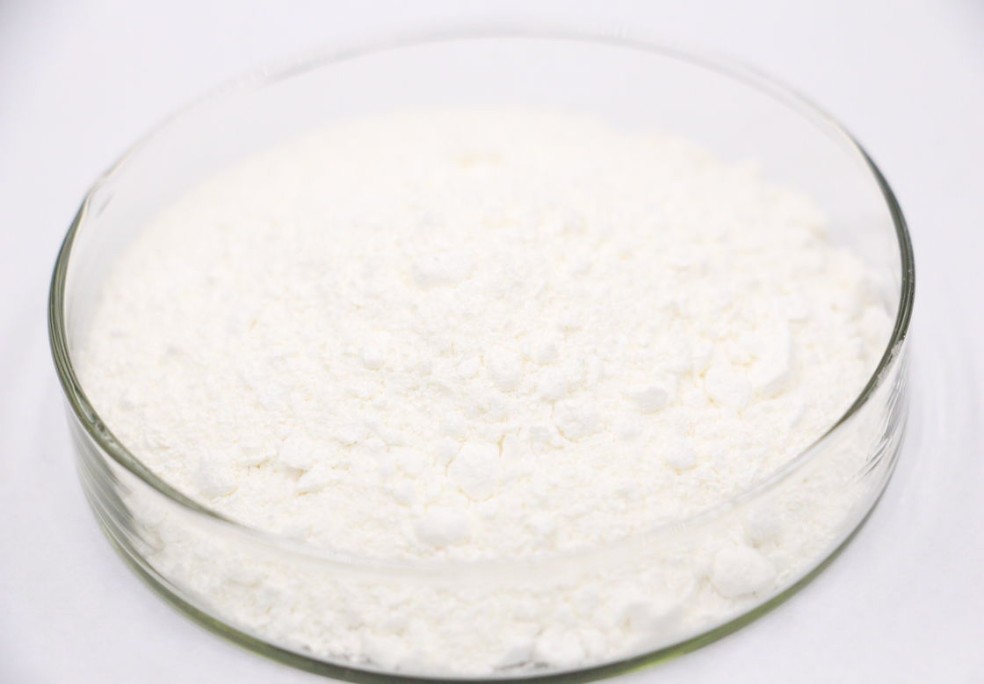Alias : T3 Sodium Salt , T3, Na , O-[4-Hydroxy-3-Iodophenyl]-3,5-Diiodo-L-Tyrosine Sodium Salt , Liothyronine Sodium , Liothyronine Sodium Salt , H-Thy(3,3′,5-I3)-Ona
Alias: Cytomel T3 ; 3,3′,5-triiodothyronine sodium
CAS NO: 55-06-1
Einecs No: 200-223-5
MF: C15H11I3NNaO4
MW: 672.96
Organic Herbal Weight Loss Powders For Tablet / Capsule , Einecs No. 200-223-5
Purity: 98.0%
Appearance: white or light yellow powder, almost tasteless.
Triiodothyronine, also known as T3, is a thyroid hormone. It affects almost every physiological process in the body, including growth and development, metabolism, body temperature, and heart rate.
Production of T3 and its prohormone thyroxine (T4) is activated by thyroid-stimulating hormone (TSH), which is released from the pituitary gland. This pathway is regulated via a closed-loop feedback process: Elevated concentrations of T3, and T4 in the blood plasma inhibit the production of TSH in the pituitary gland. As concentrations of these hormones decrease, the pituitary gland increases production of TSH, and by these processes, a feedback control system is set up to regulate the amount of thyroid hormones that are in the bloodstream.
As the true hormone, the effects of T3 on target tissues are roughly four times more potent than those of T4.Of the thyroid hormone that is produced, just about 20% is T3, whereas 80% is produced as T4. Roughly 85% of the circulating T3 is later formed in the thyroid by removal of the iodine atom from the carbon atom number five of the outer ring of T4. In any case, the concentration of T3 in the human blood plasma is about one-fortieth that of T4. This is observed in fact because of the short half-life of T3, which is only 2.5 days.This compares with the half-life of T4, which is about 6.5 days.
Liothyronine is the most potent form of thyroid hormone. Chemically, it is nearly identical to triiodothyronine (T3). As such, it acts on the body to increase the basal metabolic rate, affect protein synthesis and increase the body's sensitivity to catecholamines (such as adrenaline) by permissiveness. The thyroid hormones are essential to proper development and differentiation of all cells of the human body. These hormones also regulate protein, fat, and carbohydrate metabolism, affecting how human cells use energetic compounds.
In comparison to levothyroxine (T4), liothyronine has a faster onset of action as well as a shorter biological half-life, which may be due to less plasma protein binding to thyroxine-binding globulin and transthyretin.
Physicians can use this instead of or in addition to levothyroxine (T4) for patients undergoing thyroid withdrawal. When a patient has thyroid cancer or Graves' disease, ablation therapy with radioactive iodine can be used to remove any trace thyroid tissue. For 131I therapy to be effective, the trace thyroid tissue must be avid to iodine. The best method is to starve the tissue of iodine but this can lead to hypothyroid symptoms for the patient. Withdrawal from levothyroxine can be done but it takes six weeks of withdrawal for the remaining thyroid tissue to be completely starved. Six weeks is needed owing to levothyroxine's long half life. Six weeks can be inconvenient for the patient and delay treatment. Liothyronine instead can be taken and withdrawn from for two weeks to starve the thyroid tissue. This is much safer and more convenient than levothyroxine.
| Item |
Specification |
Result |
| Appearance |
An odorless, almost white or buff colored powder |
pass |
| Solubility |
1,Very slightly soluble in water |
pass |
| 2,slightly soluble in alcohol |
pass |
| 3,practically insoluble in most other organic solvents |
pass |
| 4,disolves in diluted aqueous sodium hydroxide solutions |
Pass |
| Identificaton |
a) Heat about 50 mg with a few drops of sulfuric acid in a porcelain crucible: violet vapors of iodine are evolved. |
pass |
| b)The retention time of the major peak is confirm to the RS |
pass |
| Loss on Drying |
Not more than 4.0% |
0.46% |
| [a]20/D
C=1 in 1M HCl/EtOH 1:4 |
+18 ~ +22o |
+20.9o |
| Assay(HPLC) |
Not less than 95.0% |
99.18% |
| Levothyroxine sodium |
Not more than 5.0% |
0.68% |
| Conclusion: |
Up to the Standard for Export |






















